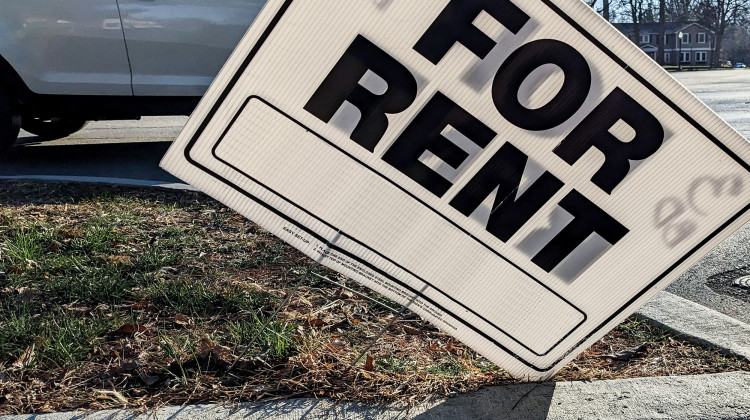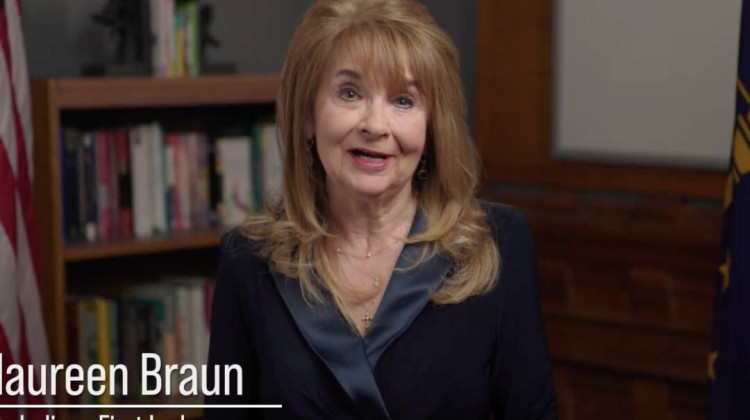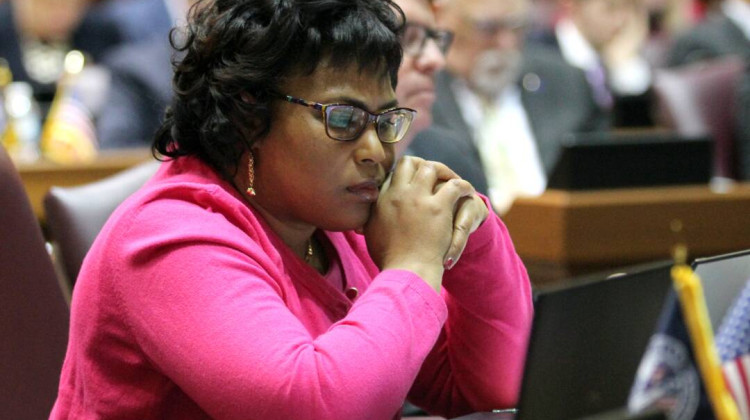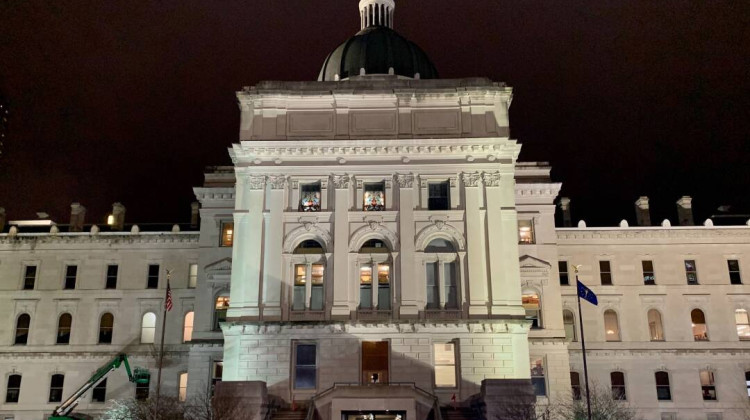
A 2024 report shows Indiana has only 34 affordable and available rental units for every 100 extremely low-income households in the state.
Lauren Chapman / IPB NewsWhile Indiana lawmakers have sought to address housing access in recent years, affordable housing still remains out of reach for many Hoosiers.
Here’s what the state’s six Republican gubernatorial candidates say about the issue:
Crouch said government cannot drive progress — only the private sector can, she said — but government can be a catalyst and willing partner in addressing the issue.
As lieutenant governor, Crouch oversees the Indiana Housing and Community Development Authority (IHCDA), whose down payment assistance program helped a record number of first-time homebuyers last year. She also touted the new Residential Housing Infrastructure Assistance Fund, created by lawmakers in the 2023 session.
Crouch noted that state government can’t control inflation and interest rates, which add to the price of homes.
“But we can look at how we can keep the cost of homes down in terms of rules and regulations,” Crouch said. “And as governor, I will look at having a doorbuster initiative where we pull together the stakeholders and we look at those rules and regulations that add to the cost of homes, because 25 percent of the cost of the home is due to rules and regulations, and many of them are unnecessary.”
READ MORE: How much do environmental regulations like wetland protections add to home prices?
Crouch also pointed to her plan of eliminating Indiana’s individual income tax as a way to put more money into people’s pockets, which in turn will help them better afford housing.
Doden said housing affordability and access goes to the heart of one of his campaign’s tentpoles: the Indiana Main Street Initiative, focused on revitalizing small towns.
“The average community of 10,000 to 12,000 people has 100 buildings in their core,” Doden said. “And if they're like some of the cities that we've worked with, about 80 percent on average is now uninhabitable. So, when we come in and have a 10-year plan to restore all 100 buildings, the second, third and fourth story becomes housing.”
Doden said government support of housing is also a big part of the state program that began as the Regional Cities Initiative under Doden’s leadership of the Indiana Economic Development Corporation and evolved into the READI program under Gov. Eric Holcomb.
“This becomes a long term issue for population growth in Indiana,” Doden said. “Because we're growing our population [but] we need to grow a little faster.”
Hill said there are limitations to what the government should do when it comes to the housing market.
“We need to make sure that we have a relatively regulation-free environment, that we're addressing regulatory controls that prohibit or hinder homeownership and home attainment,” Hill said.
Hill said he doesn’t see any immediate answers on the nationwide shortage of housing stock. But he said the state must do more to ensure young people remain in Indiana after they leave school.
“We're looking at reducing some of the tax burden on folks between the age of 18 and 35 to encourage them to remain in Indiana, to invest in a home,” Hill said.
Join the conversation and sign up for the Indiana Two-Way. Text "Indiana" to 765-275-1120. Your comments and questions in response to our weekly text help us find the answers you need on statewide issues and the election, including our project Civically, Indiana.
Reitenour said addressing housing access through the government is difficult because, as a conservative, she believes in less government.
But on a larger scale, Reitenour wants to build out a new rail network, connecting small towns throughout the state, that she calls the “Indiana Goodness Train.”
“Giving private investors the opportunity to come into these small towns and one, bring in the restaurant field,” Reitenour said. “But also, what about tiny homes? I think that that's something that the next generation is looking for, and these small towns are perfect for that.”
Reitenour said it would be the government’s responsibility to address sewer and water infrastructure.
“I do think that it is time for the state to have a statewide conversation with our counties about our sewer and water, and come up with engineering conclusions that will be good for everyone as a whole, instead of all the counties having to pay on their own for these engineering design improvements,” Reitenour said.
U.S. Sen. Mike Braun (R-Ind.):
On the single-family housing side, Braun said the solution will come from “the world of who builds homes and how you can be more entrepreneurial there.”
He cited Cook Medical Group, which worked with local builders in Owen County to build housing for its workers that cost between $188,000 and $212,000.
Braun said government support will likely be needed for multifamily housing options.
“I will seek entrepreneurial builders and folks like them to figure out what can be done before we turn to government, and then make sure government is helping where people need it the most,” Braun said.
Chambers has worked in the real estate business for 40 years through the firm he founded, Buckingham Companies.
He said government doesn’t need to solve the housing crisis, but it does need to collaborate and lead on the issue.
“I would completely modernize the IHCDA, to help with all forms of housing: single family housing, workforce housing and affordable housing options,” Chambers said.
Chambers also pointed to the success of the READI program, which he oversaw as Indiana commerce secretary.
“It took $1 billion of state resources and leveraged it with public sector resources, 12 to 1. So, a $1 billion investment by the state ended up generating a $12 billion economic impact – $4 billion of that was housing," Chambers said. "So theoretically, as commerce secretary … I did more to impact Indiana's housing supply than one of my competitors did in seven or eight years.”
Brandon is our Statehouse bureau chief. Contact him at bsmith@ipbs.org or follow him on Twitter at @brandonjsmith5.
 DONATE
DONATE








 Support WFYI. We can't do it without you.
Support WFYI. We can't do it without you.